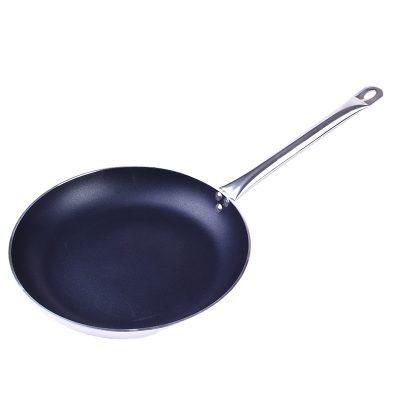The frying pan, a versatile kitchen tool, is a gateway to mastering various culinary techniques. From searing to stir-frying, this essential cookware empowers you to create a spectrum of flavorful dishes. In this article, we’ll delve into the art of using your frying pan to its full potential.
Introduction:
The frying pan’s versatility makes it an indispensable tool for any cook. By understanding and practicing various cooking techniques, you can transform simple ingredients into culinary masterpieces.
Searing and Browning:
Achieving the perfect sear on meats and vegetables requires the right technique and a hot, well-seasoned frying pan. Start with a preheated pan to ensure a golden-brown crust without sticking. Allow ingredients to sear undisturbed for a few minutes on each side.
Sautéing:
Sautéing involves cooking small pieces of food quickly over high heat while stirring or tossing. Use a frying pan with sloped sides to facilitate movement. Keep ingredients moving to ensure even cooking and prevent burning.
Stir-Frying:
Stir-frying is a high-heat technique that involves continuously stirring ingredients in a frying pan. The even heat distribution of your pan is crucial for quick and uniform cooking. Cut ingredients into consistent sizes for even cooking.
Pan-Frying:
Pan-frying combines searing and cooking in a shallow layer of oil. It’s perfect for breaded items like cutlets or fish fillets. Use enough oil to cover half of the food, and flip it halfway through cooking for even browning.
Deglazing:
After cooking meats or vegetables in your frying pan, deglazing involves adding liquid (such as wine or broth) to loosen and incorporate flavorful browned bits from the pan’s surface. This forms the base for rich sauces and gravies.
One-Pan Meals:
Frying pans are excellent for creating one-pan meals. Start by searing proteins, then add aromatics and vegetables. Finish cooking in the same pan to infuse flavors and reduce cleanup.
Temperature Control:
Mastering your frying pan involves understanding temperature control. Preheating the pan before adding ingredients ensures even cooking. Adjust the heat as needed to avoid burning or overcooking.
Oil Choice:
Choose oils with appropriate smoke points for each cooking technique. High-heat methods like searing benefit from oils with high smoke points, such as vegetable or avocado oil.
Experimentation and Innovation:
Don’t be afraid to experiment with different techniques and ingredients. Adapt recipes to suit your preferences and explore new flavor combinations.
Conclusion:
The frying pan is more than just a vessel for cooking; it’s a canvas for culinary creativity. By mastering various techniques and understanding your frying pan’s capabilities, you can embark on a flavorful journey of culinary exploration.






